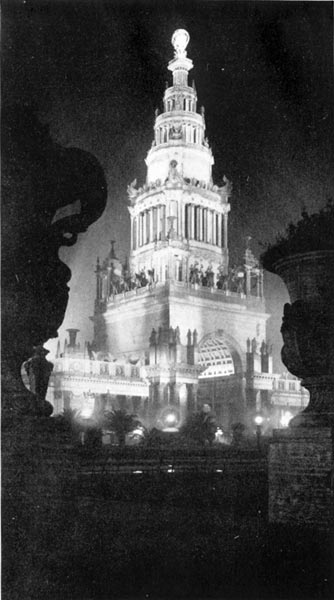| Home -> Paul Elder - > The Architecture and Landscape Gardening of the Exposition -> Tower of Jewels - The Illumination by Night | |||
|
Tower of Jewels
The Illumination by Night |
|||
 |
|||
|
|
|||
| The Tower of Jewels, designed by Carrere and Hastings of New York City, is the centralizing and dominating feature of the Exposition. In its colossal dimensions and in the imposing dignity of its position and conception, it seeks to embody, in one triumphal memorial, the importance to the entire world of the opening of the Panama Canal; while in architecture, sculpture, mural painting, decorative ornament and inscribed tablet, it celebrates, in varying form, the glory of achievement. Classic influences inspired the great, central Roman arch, with its massive colonnades on either side and the Corinthian and Doric columns, repeated on successive tiers to the globe, upborne by four giant Atlases, which crowns the apex; but the spirit of conquest and discovery, which vitalizes the sculptured figures and mural paintings, is modern in its expression and in its historical fidelity. The Tower takes its name from the thousands of many-colored jewels so cut, polished and suspended that they reflect the sunshine with dazzling brilliancy by day and at night, under the white radiance of the searchlights, clothe the whole structure with shimmering splendor. |
|||